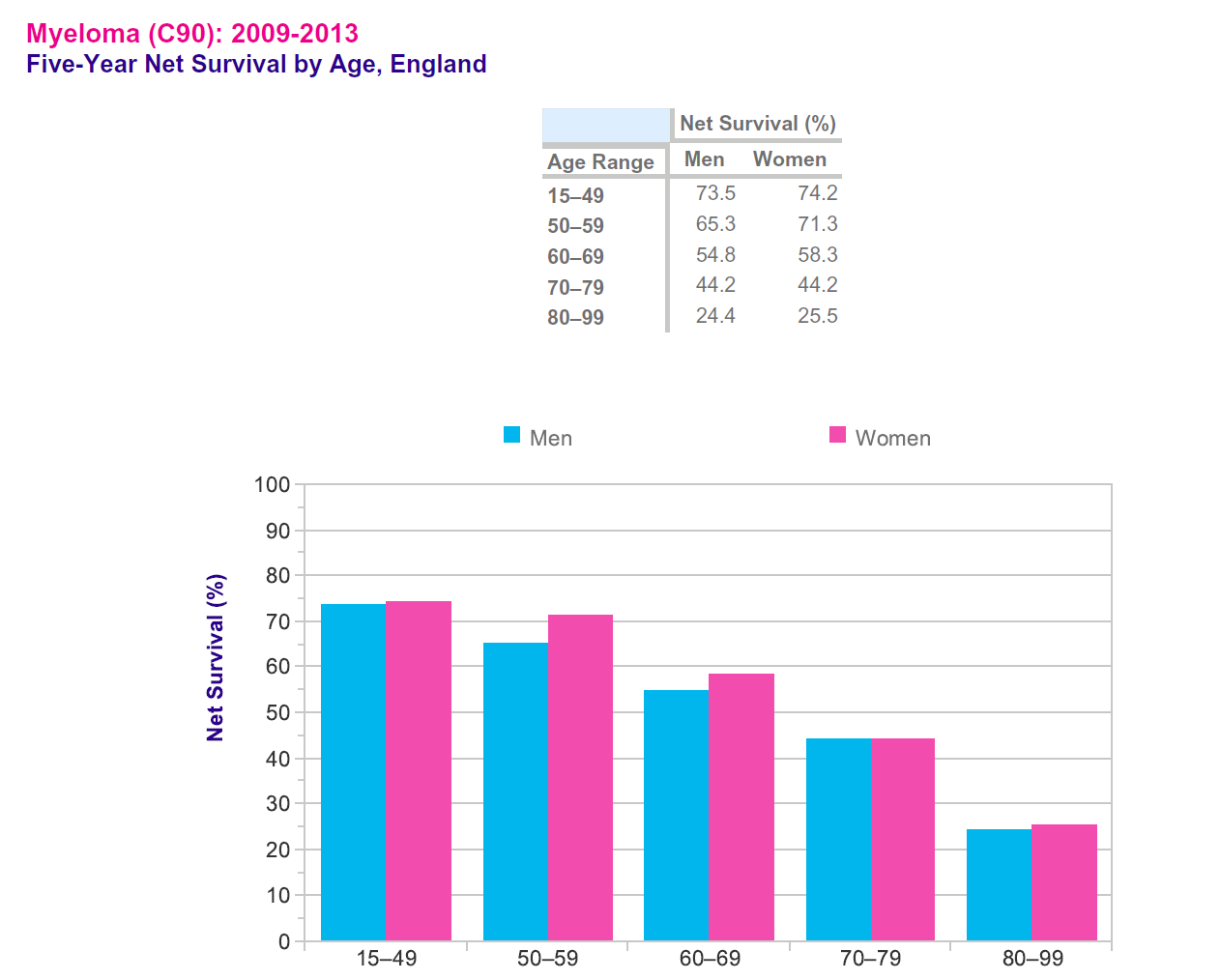Prognosis of multiple myeloma
The natural history of myeloma is heterogeneous and the survival times may vary from few weeks to more than 20 years. According to the International Staging System (ISS) the median survival for multiple myeloma patients are
- stage I - 62 months
- stage II - 45 months
- stage III - 29 months (1).
Outcome in myeloma has been shown to be dependent on certain cytogenetic and molecular genetic abnormalities (1)
- t(4;14), t(14;16) and deletion 17p, demonstrated by fluorescence in situ hybridisation (FISH) are generally accepted to be associated with an adverse outcome in myeloma (1)
Poor prognostic indicators are high paraprotein spikes, renal failure, hypercalcaemia, or extensive bone disease.
Two sub-groups are recognised:
- low tumor burden:
- criteria: IgG spike < 5g /dl; solitary lytic bone lesion; no evidence of severe anaemia, hypercalcaemia, or renal failure
- median survival: 5-6 years
- high tumor burden:
- criteria: IgG spike > 7g/dl; haematocrit < 25%; calcium > 12 mg/dl; or > 3 lytic bone lesions;
- median survival: 1 year
A third (33%) of people diagnosed with myeloma in England and Wales survive their disease for ten years or more (2010-11)
Almost half (47%) of people diagnosed with myeloma in England and Wales survive their disease for five years or more (2010-11)
More than three-quarters (77%) of people diagnosed with myeloma in England and Wales survive their disease for one year or more (2010-11)
Around three quarters of people in England diagnosed with myeloma aged 15-49 survive their disease for five years or more, compared with a quarter of people diagnosed aged 80 and over (2009-2013).
Myeloma survival is improving and has quadrupled in the last 40 years in the UK. In the 1970s, around 5 in 100 people diagnosed with myeloma survived their disease beyond ten years, now it's a third
Increasing age (2)
- five-year survival for myeloma decreases with increasing age
- five-year net survival in men ranges from 74% in 15-49 year-olds to 24% in 80-99 year-olds for patients diagnosed with myeloma in England during 2009-2013
- in women, five-year survival ranges from 74% to 26% in the same age groups
- older myeloma patients may be in poorer general health, so considered ineligible for transplants and unable to tolerate strong or sustained chemotherapy, which may explain their lower survival

Reference:
Create an account to add page annotations
Annotations allow you to add information to this page that would be handy to have on hand during a consultation. E.g. a website or number. This information will always show when you visit this page.